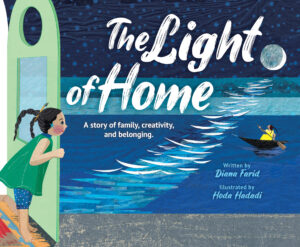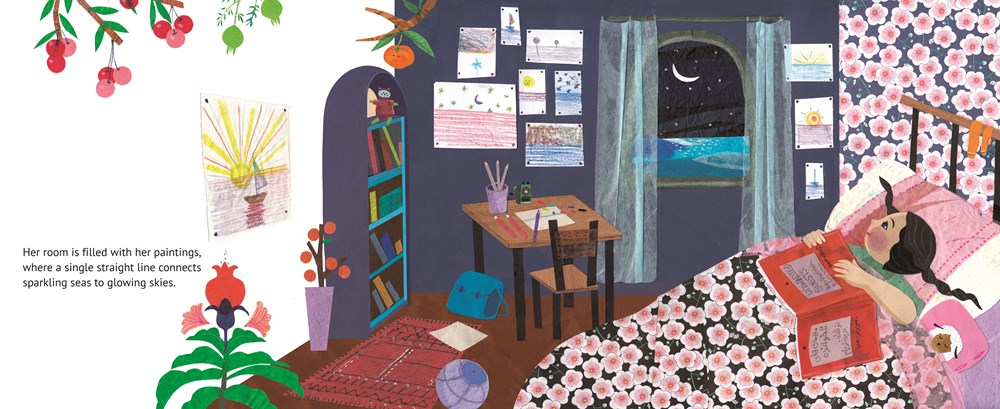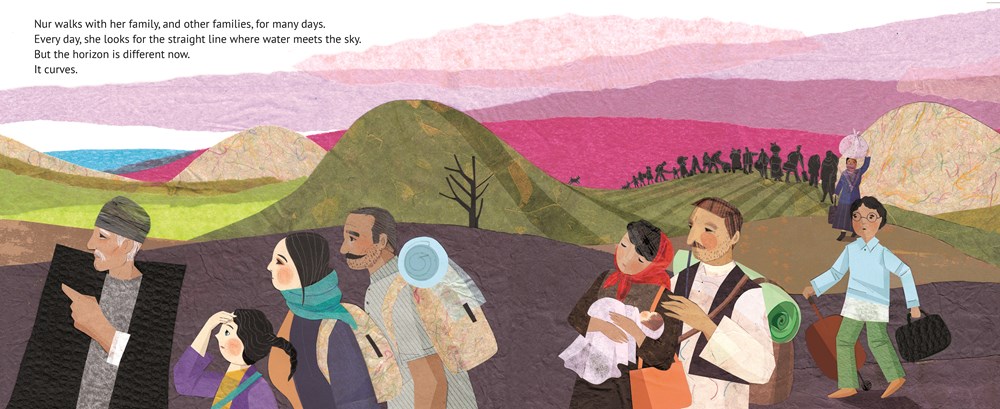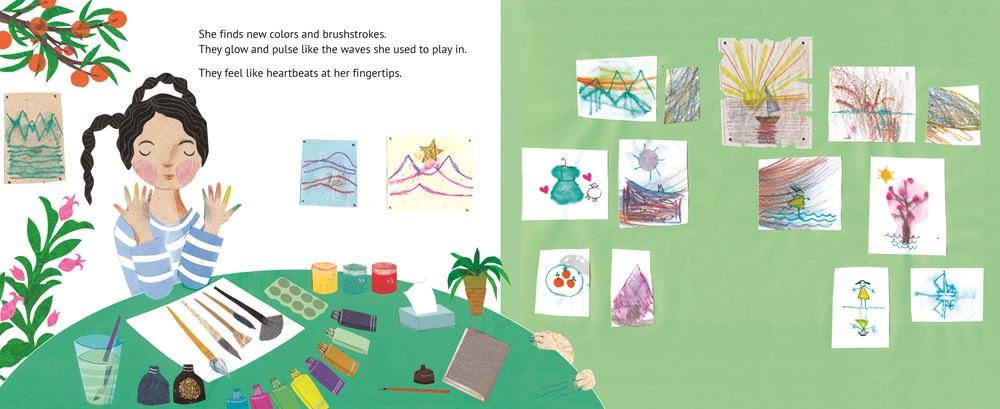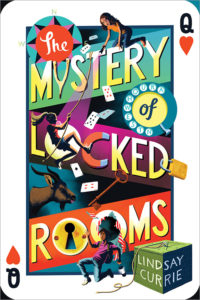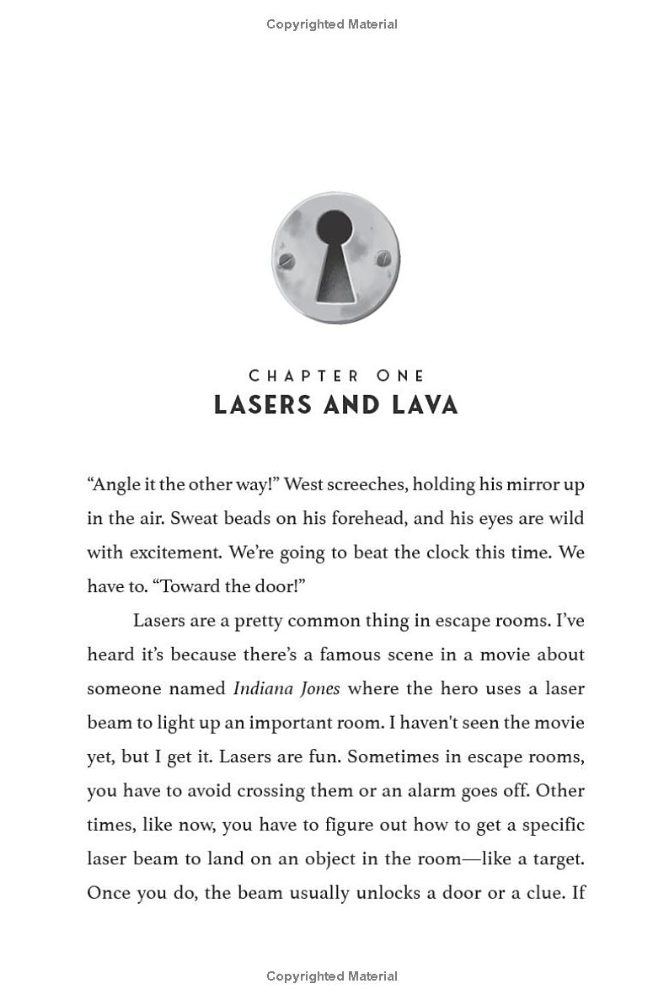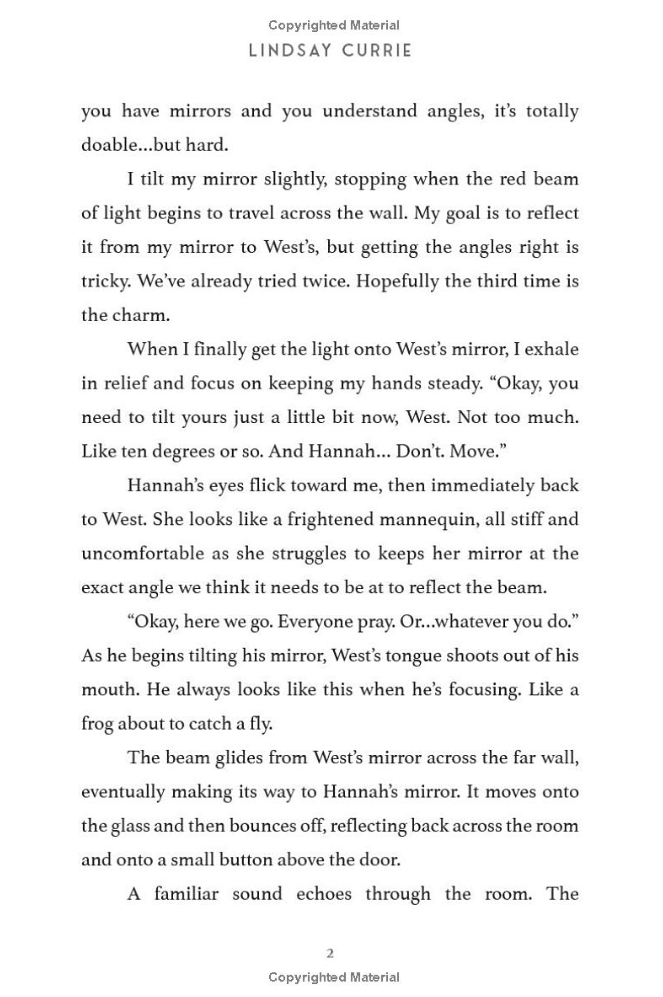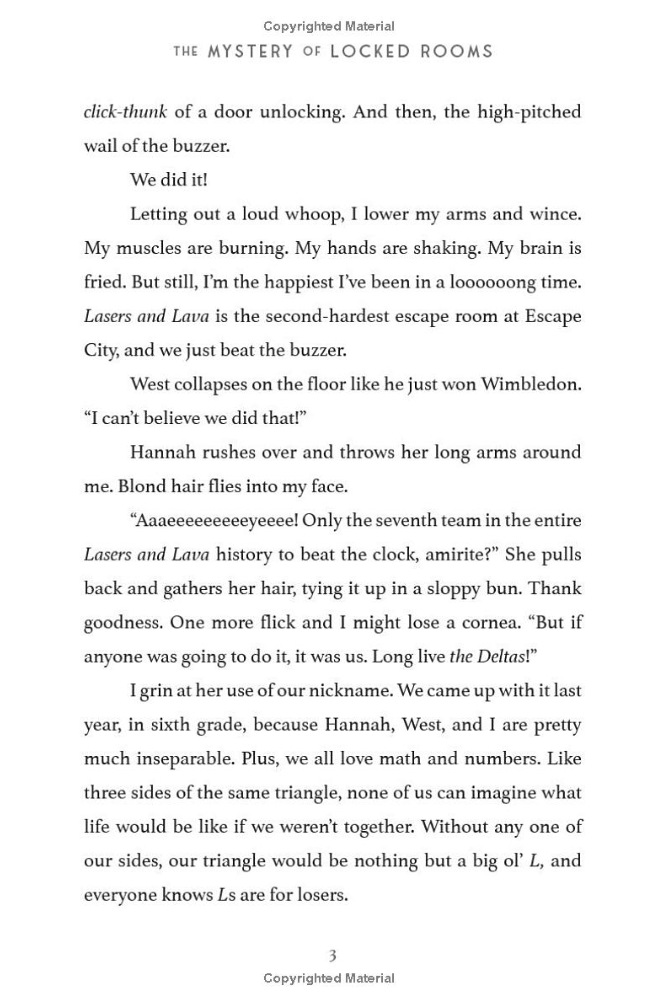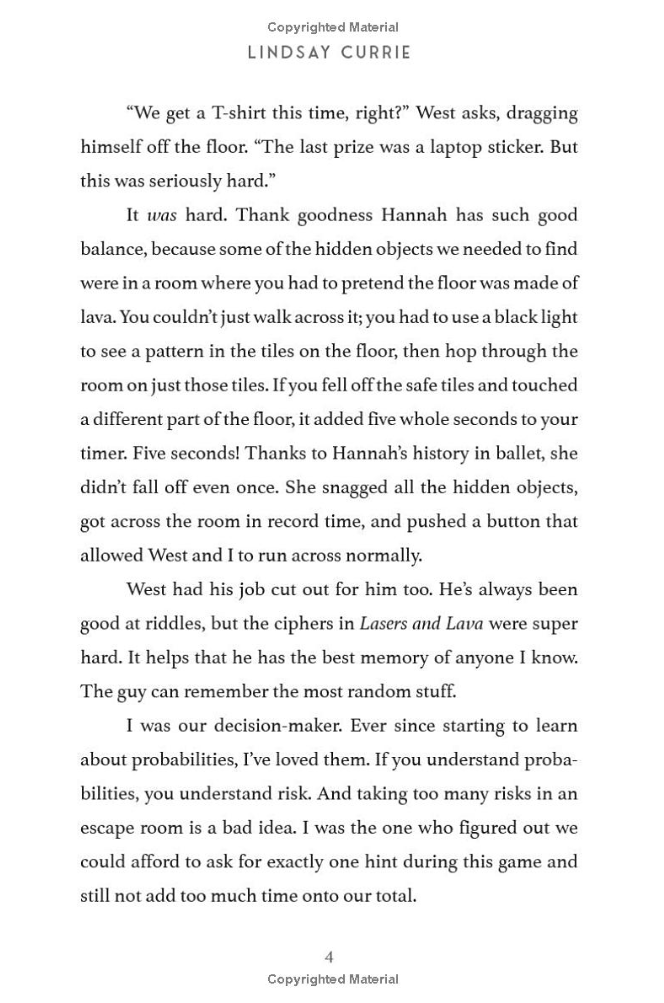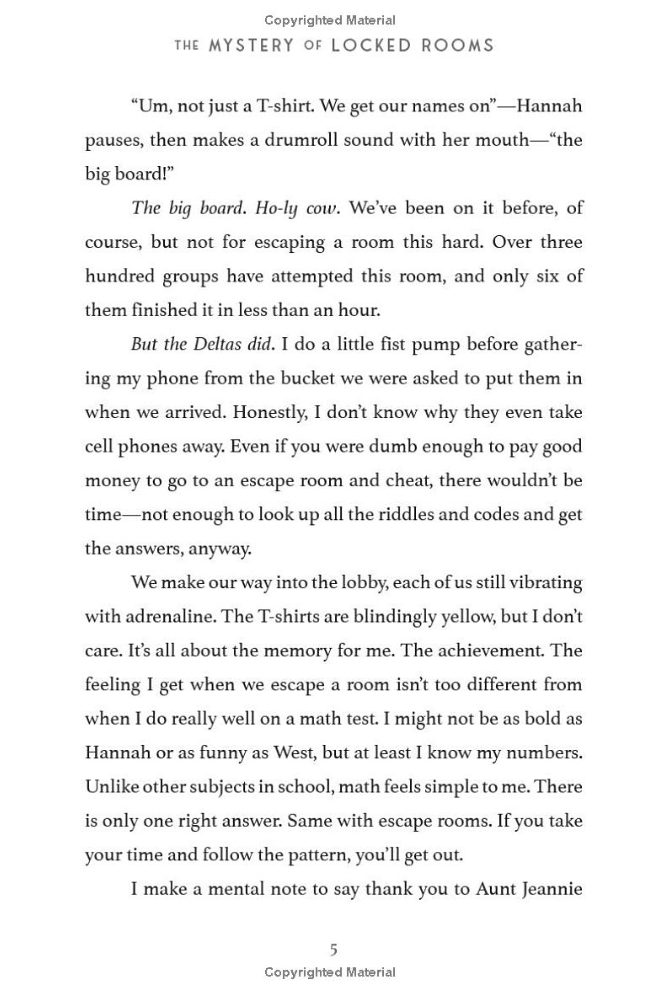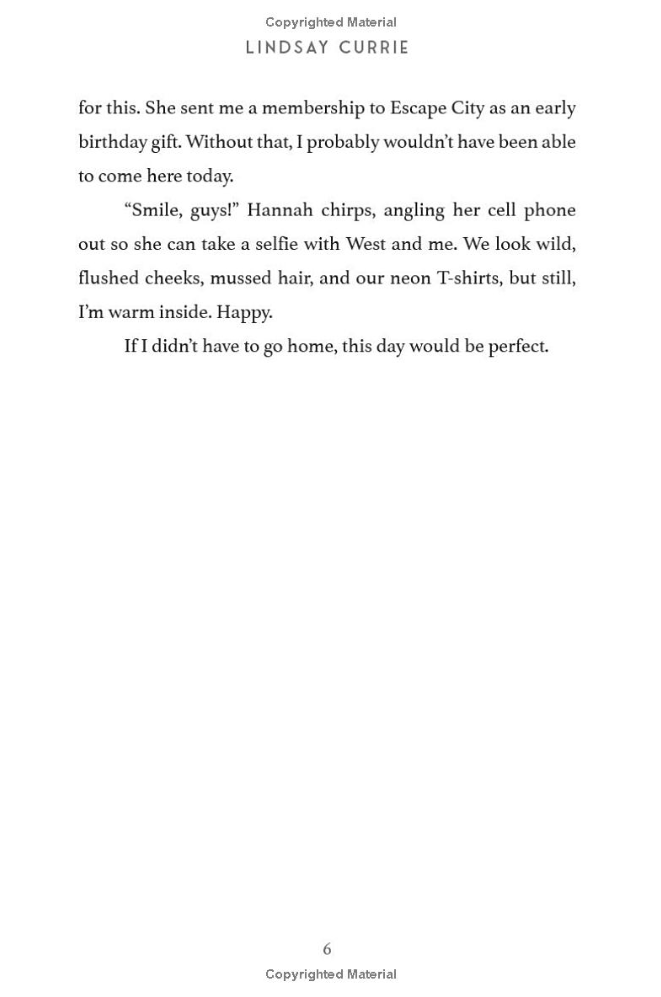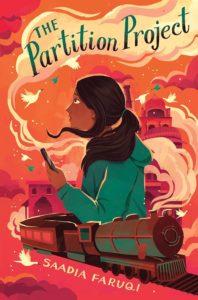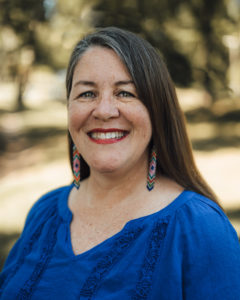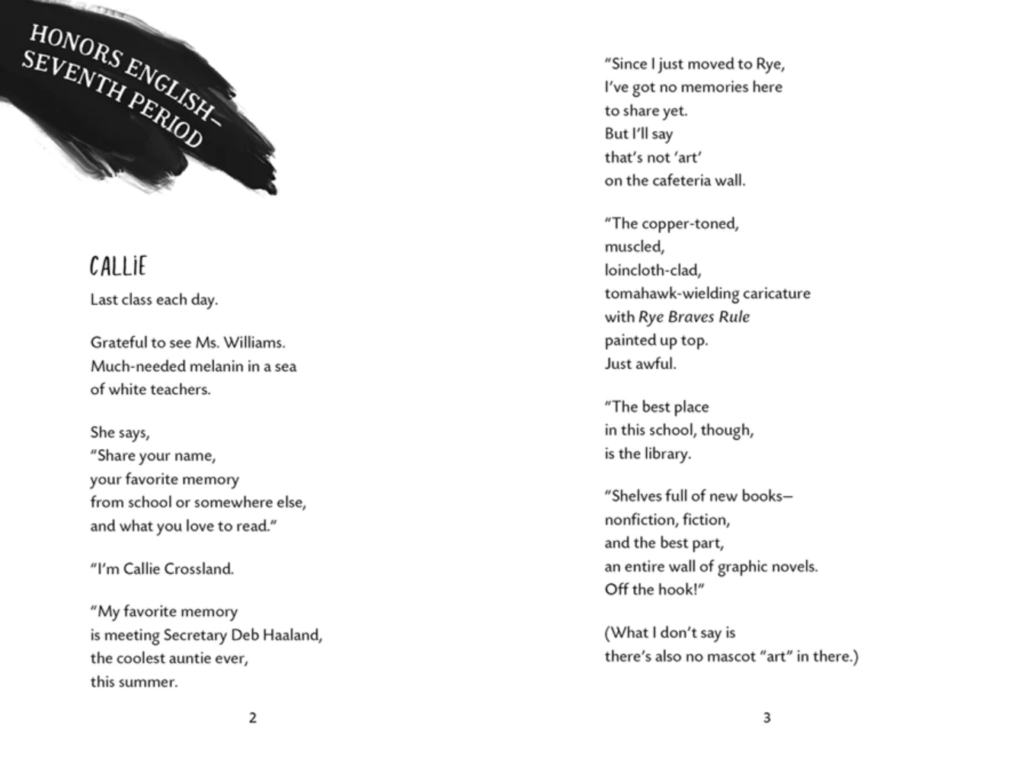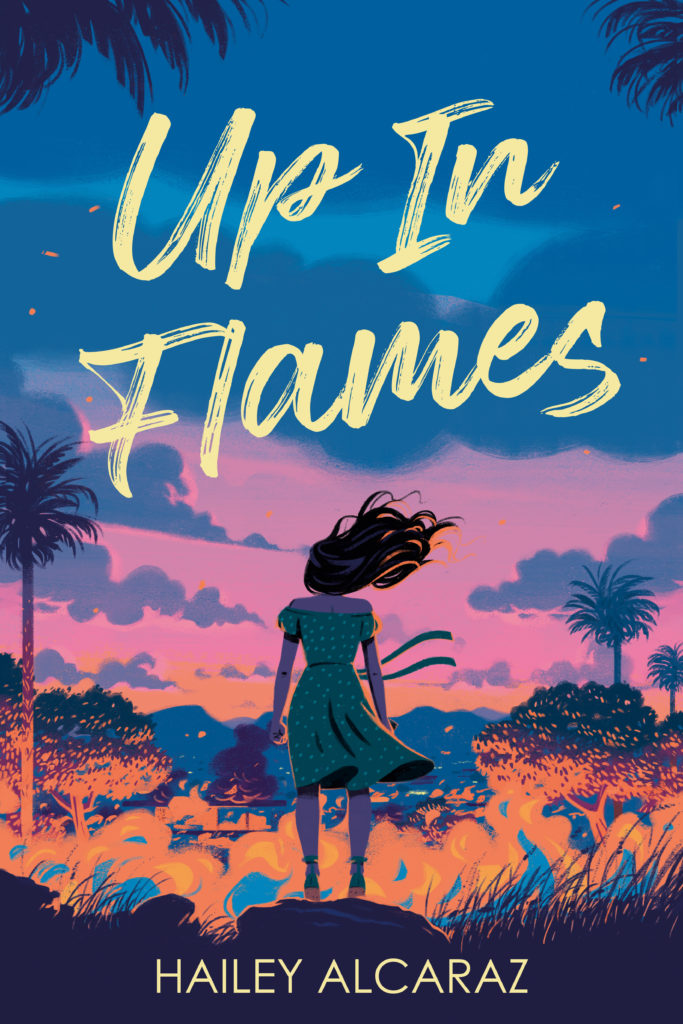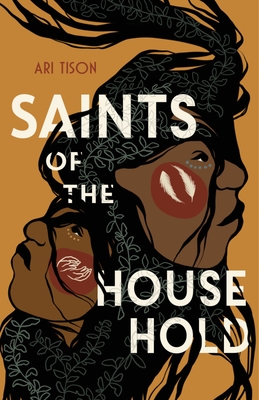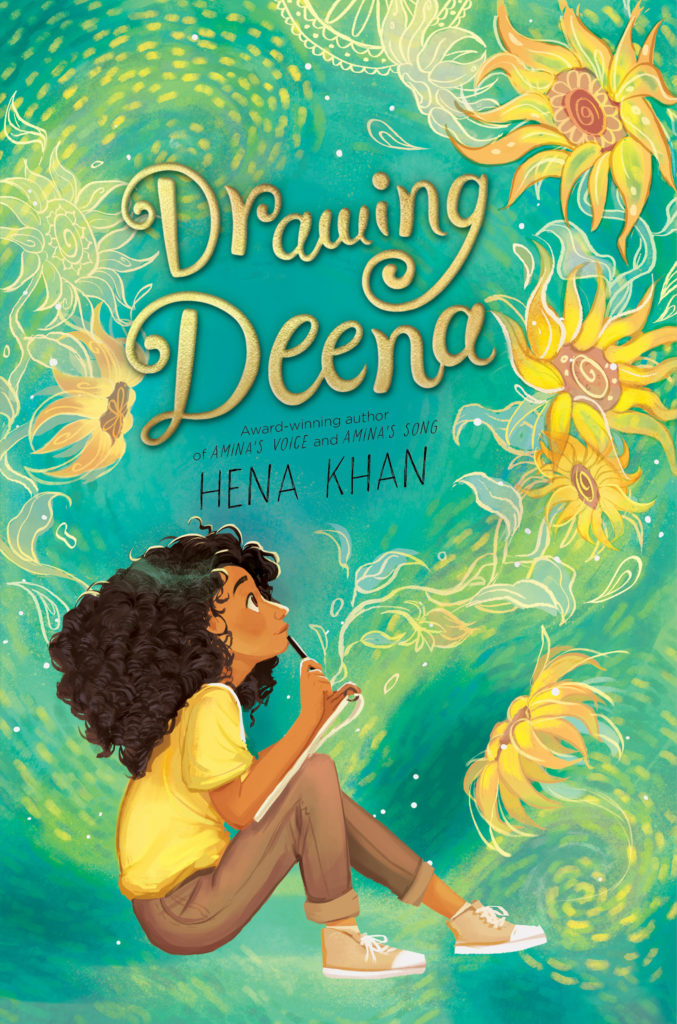
Drawing Deena
Author: Hena Khan
Publishing February 6th, 2024 by Salaam Reads / Simon & Schuster Books for Young Readers
Summary: From the award-winning author of Amina’s Voice and Amina’s Song comes a tenderhearted middle grade novel about a young Pakistani American artist determined to manage her anxiety and forge her own creative path.
Deena’s never given a name to the familiar knot in her stomach that appears when her parents argue about money, when it’s time to go to school, or when she struggles to find the right words. She manages to make it through each day with the help of her friends and the art she loves to make.
While her parents’ money troubles cause more and more stress, Deena wonders if she can use her artistic talents to ease their burden. She creates a logo and social media account to promote her mom’s home-based business selling clothes from Pakistan to the local community. With her cousin and friends modeling the outfits and lending their social media know-how, business picks up.
But the success and attention make Deena’s cousin and best friend, Parisa, start to act funny. Suddenly Deena’s latest creative outlet becomes another thing that makes her feel nauseated and unsure of herself. After Deena reaches a breaking point, both she and her mother learn the importance of asking for help and that, with the right support, Deena can create something truly beautiful.
Praise: *Khan skillfully weaves in cultural references and Urdu phrases alongside thoughtful questions about the arts, mental health, social media, parent-child relationships, and the pressures adolescent girls face about their appearances. A nuanced and quietly powerful story. – Kirkus, STARRED REVIEW

About the Author: Hena Khan is a Pakistani American writer. She is the author of the middle grade novels Amina’s Voice, Amina’s Song, More to the Story, Drawing Deena, and the Zara’s Rules series and picture books Golden Domes and Silver Lanterns, Under My Hijab, and It’s Ramadan, Curious George, among others. Hena lives in her hometown of Rockville, Maryland, with her family. You can learn more about Hena and her books by visiting her website at HenaKhan.com or connecting with her @HenaKhanBooks.
Review: Art + middle school + identity + family struggles + friends + growth of so many characters = a book that I couldn’t put down.
As a mental health advocate and someone who believes we should all share our struggles public much more than we do, Drawing Deena is a book that went straight to my heart.
Deena has so much going on. She is truly just trying to hold it together, but it is all too much. However, if you look on the surface, she looks like any other pre-teen and she has learned to mask all of her emotions. But that is what makes the book so insightful. This is how most of our students who are suffering from mental illness deal on a day to day basis–the best they can and often they make it so outside people wouldn’t notice. But throughout the book, she learns to find her voice: her advocacy voice, her friendship voice, her stern voice, her artist voice… She learns that her voice matters.
There is a part of the press release I had to share that pulls it all together: “According to the CDC, anxiety affects approximately one in 11 children aged 3-17. A panel of experts recently recommended that all children 8 and older be screened for anxiety. Thus, Khan hopes to help address America’s mental health crisis among children through her work. Deena is a lovable and relatable character, a young artist who struggles with anxiety, who wants her parents to stop fighting and having money woes, and dreams of being a painter like her idol Vincent van Gogh. She learns to stand up against bullies of all ages and that it’s okay to ask for help when you need it.”
Tools for Navigation: In addition to the advocacy of mental health, I love the art aspects of the book! I think it is a perfect way to move a discussion of art history to contemporary and diverse artists and finding your own style of art. This was a very powerful aspect of the book!
I also love how Deena helps her mother with her business, and I think that what she does for the store could become an activity as well: create a logo, create a website, plan finances, etc.
Discussion Questions:
- What is the first sign that Deena is struggling with her mental health?
- Why is meeting Salma such a pinnacle event in Deena’s life?
- Why does the Van Gogh experience affect Deena the way it does?
- Do you think Deena should have gotten mad at Parisa when she did?
- How is Deena’s school helping her with her anxiety?
- Why is Deena’s father so hesitant for her to get help? What does this show us about shift in the view of mental health between generations?
- Why is Deena’s mom so hesitant about Deena’s changes for her business? In the end, do you think that Deena helped her out?
- Why is everyone so interested in getting on social media so quickly? Do you believe this is good for teen’s mental health?
Flagged Passages/Spreads: I open the door and Parisa bounds inside. My cousin is always in a hurry, whether she’s running for the bus, walking to a store at the mall, or racing down the halls at school. I struggle to keep up with her wherever we go together. It doesn’t help that she’s at least two inches taller than me and has super long legs.
“Be careful, this is still hot,” Saima Khala says, handing me a pot with two worn oven mitts. “Put it on the stove.”
“What is it?” I ask.
“Chicken pulao. Your mother said she didn’t have time to cook, and I was already making this.”
“Yum.” My aunt’s pulao is the best, but I’d never admit that to Mama.
I take the pot, heavy with rice, and carry it to the kitchen, and Parisa sets a bag filled with containers on the counter. Some are full, and others are empty and will probably go back full. This is how it works between our families, there’s a constant exchange of food.
“Leave the daal out and put the rest in the fridge. Where’s your mother?” Khala asks as she opens a drawer and takes out a big spoon.
“I think she’s upstairs. Rubina Auntie just left,” I say.
Khala smiles and pats my cheek. She looks like a younger and more stylish version of my mom although she’s a couple of years older than her. That’s something else I’d never tell Mama.
“How are you?” she asks, her eyes piercing in a way that makes me feel like she cares, and that she remembers what it’s like to be my age.
“Good,” I say, smiling back. “But I haven’t started my homework or studying for my test. We went to the dentist after school.”
“What kind of test?”
“Science.”
“Go study. Parisa can help you. She remembers what she studied last year, right?”
“Oh yeah, of course,” Parisa says. “I remember every single thing I’ve ever learned in school.” She grins at me.
“Okay, smarty-pants, well don’t distract her then!” Khala smacks Parisa playfully on the shoulder. “I’ll take care of this and help your mom.”
“Come on,” I say to Parisa.
Parisa beats me up the stairs and heads to my room. It’s the smallest one in the house, but I have a bigger closet than Musa. My cousin plops down on my bed and sticks out her hand. Her nails are purple with a gold streak running through them.
“What do you think?”
“Did you do them yourself?” I ask, taking her hand and looking at it closely.
“Of course.”
“It totally looks professional.” I’m seriously impressed with Parisa’s nail art skills. She’s been doing her nails since I was ten and she was eleven, and she’s gotten better and better over time. It looks like she got them done at a salon, which she basically did.
Parisa’s mom started offering eyebrow threading to ladies in the community from home a few years ago. She gradually added waxing, facials, and other skin care services. Now, my Khala’s got a legit home-based salon and is always busy. Parisa knows a lot about it and helps her mom out with booking appointments and other stuff. My cousin is the reason I’ve been taking more of an interest in Mama’s boutique lately. Maybe I can help her business take off the same way.
“You should let me do yours,” Parisa says, glancing at my nails, jagged in places from where I chew on them. I try not to, but it’s a bad habit when I’m nervous.
“I’m good.” I clench my fists and hide my nails.
“Come on, it’ll be fun. I’ve got a bunch of new colors,” Parisa says.
“It’ll get messed up when I do my art projects.” I shake my head. I don’t add that I’m more interested in painting a canvas than either my nails or my face.
“Fine.” Parisa fake pouts. “But you have to let me do your hair then. Honestly, Deena, you would look so pretty if you curled your hair and put some anti-frizz in it.”
I try not to react, even as her words grate on my nerves. My cousin’s always pointing out how much better I’d look if I only did something to change myself.
“My hair’s fine,” I mumble, noticing how Parisa’s hair is shiny and smooth with loose curls on the ends. I picture my own head, filled with tighter curls, topped with a layer of frizz. But it takes too long to fight my hair into submission. And the few times I ever had it blow-dried straight, I hated the way it made me look like a different person. I’m not interested in doing that again, so Parisa can make me her project. No, thanks.
“You’re in seventh grade now, Deena. You should pay a little more attention to the way you look. I didn’t care when I was younger either, but now I realize my mom’s right. It’s good to take pride in your appearance.”
Is it though? I want to say. How much pride?
But instead, I swallow my irritation and try to think of a way to change the subject.
“Want to help me choose which photo of you to use for my art assignment?” I ask.
“Sure, Deenie Beenie.” Parisa is instantly interested, and she uses the nickname she’s had for me since we were little. I pull up the photos of Parisa on my phone and swipe through them. There’s one of her seated on my bed, another in a big chair, her gazing directly into the camera, and my favorite, her reading a book.
“That one,” Parisa says, pointing. It’s the one of her looking directly into the camera. She’s got a teasing smile, like she’s hiding a secret.
“Not the one with the book?”
“I look like a dork in that one. Plus, I like the way my hair is falling over my eyes here.”
Parisa made this decision easy. I pull out my pencils and my drawing pad. I’ve already made a big grid with rulers on the page like my teacher Mr. Carey instructed. He said that for portraiture it helps to make sure that you get proportions right. I prefer to freehand, but he’s going to be checking our progress, so I have to do it this way.
I start to sketch out a basic outline of the photo while Parisa watches.
“Can you make my eyes a little bigger?” she asks. “And my nose a little smaller? Right there.”
She points at the photo.
“I’m getting graded on how much it looks like the photo,”
I laugh.
“Yeah, but can’t you, like, put a filter on it?” Parisa grins.
Every time Parisa takes a picture of us, she messes around with it for a while using a glam app. It makes your skin glow and does other things. By the time she’s done with it, we almost look like different people, and then she posts it on her socials.
I’m not allowed to have any accounts until I’m in high school but I wonder if her followers would recognize me if they ever met me in real life.
“Well, just make me look good,” Parisa says after I stare at her and don’t respond.
“You always look good,” I finally say. And I mean it. Parisa is a pretty girl, and she knows it. At least I think she does. Because she also acts like she needs other people to remind her.
I’m going to make sure her portrait is beautiful. But I’m not changing the way she looks.
Read This If You Love: Iveliz Explains it All by Andrea Beatriz Arango, Fifty-Four Things Wrong with Gwendolyn Rogers by Caela Carter, Worser by Jennifer Ziegler
Recommended For:


Book Tour:
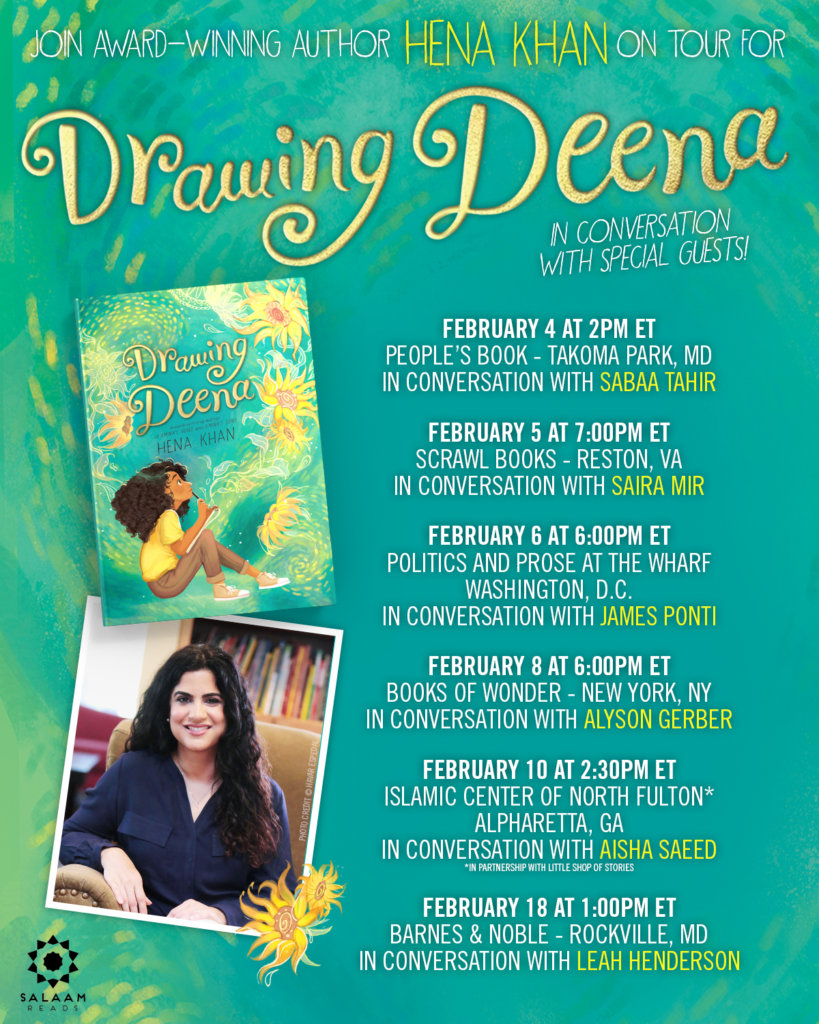

**Thank you to Simon & Schuster Children’s Publishing for providing a copy for review!**
